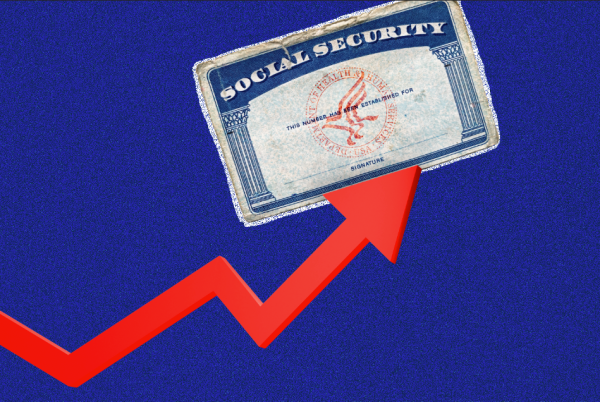Social Security Recipients Are on Track for a 2.5% Raise Next Year

The Social Security cost-of-living adjustment — commonly referred to as the COLA — for 2026 is now projected to be 2.5%, according to updated forecasts from The Senior Citizens League, or TSCL, and independent Social Security analyst Mary Johnson.
The adjustment comes amid signs that inflation, while moderating from the highs of 2022, remains persistent enough to impact older adults' purchasing power — particularly as new tariffs begin to influence consumer prices.
The updated COLA forecast is based on the latest data from the Bureau of Labor Statistics, which showed that the consumer price index for all urban consumers, or CPI-U, increased 0.1% in May. Year over year, prices have risen 2.4%, driven primarily by increases in shelter and food costs.
Meanwhile, the CPI for urban wage earners and clerical workers, or CPI-W — the index used to calculate COLA — increased by 2.2% compared to a year ago.
Johnson, a retired policy analyst specializing in Social Security and Medicare, emphasized that the 2.5% estimate for next year's COLA is a preliminary figure that could change.
“This estimate may rise with the four more months of data still to come in before the 2026 COLA will be announced in October,” she said in a note.
She added that tariffs enacted by the Trump administration are beginning to exert upward pressure on prices, although the full effects remain uncertain.
“There are signs that the pullback in higher prices appears to be reversing,” Johnson wrote, pointing to stubbornly high costs in categories that disproportionately affect retirees, such as housing, food — particularly meat — and automotive repairs.
Inflation-tracking issues could distort 2026 COLA projections
Meanwhile, TSCL’s revised 2.5% estimate marks the fourth consecutive monthly increase in its COLA projection. However, TSCL also warned that flaws in the way inflation data is currently collected may undermine the accuracy of future COLA estimates.
According to a recent TSCL news release, the BLS is struggling with staffing shortages due to a federal hiring freeze, which has forced the agency to scale back its data collection efforts. Shannon Benton, TSCL’s executive director, raised concerns about how this could affect Social Security recipients.
“While streamlining the federal government is a good thing, that shouldn’t involve cutting back on our ability to measure how our economy is changing,” she said. “Inaccurate or unreliable data in the CPI dramatically increases the likelihood that seniors receive a COLA that’s lower than actual inflation, which can cost seniors thousands of dollars over the course of their retirement.”
TSCL’s 2025 Senior Survey, which is due out this week, found that 80% of seniors believed inflation in 2024 was over 3% — significantly higher than the actual COLA of 2.5% for that year. In reality, the CPI from December 2023 to December 2024 showed an increase of 2.9%.
This perceived mismatch is fueling distrust among retirees who already feel squeezed by rising costs and stagnant benefit growth.
“Seniors should be concerned as inflation continues to tick upward,” Benton said. “TSCL’s research shows that there’s a serious disconnect between the inflation the government reports and the inflation that seniors experience every day. If the government tells us that prices are rising faster, it’s likely that seniors are already feeling the crunch.”
More from Money:
Why Some Social Security Recipients Won't Get Payments in June
White House Plans to Eliminate Social Security Payments by Paper Check

